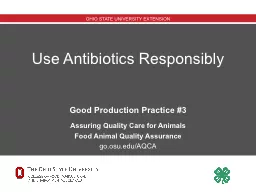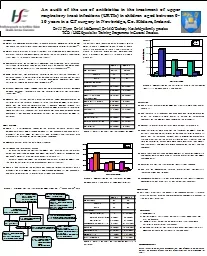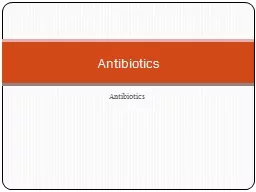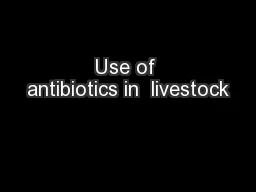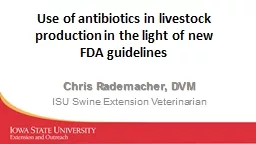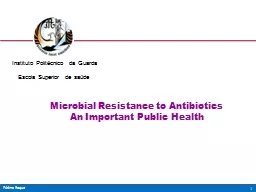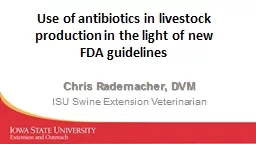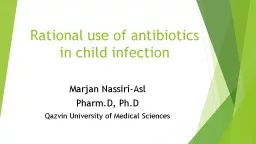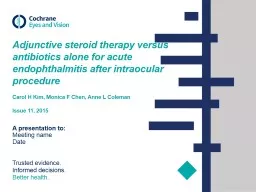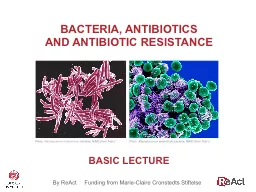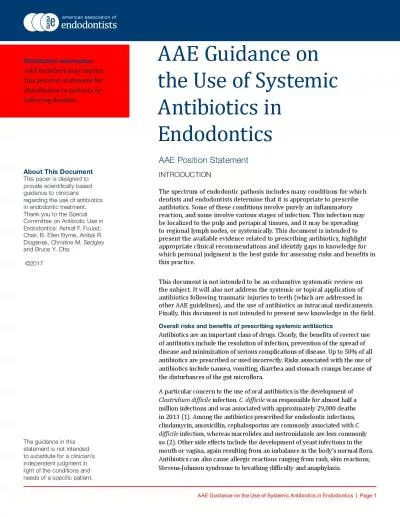PPT-The Need for New Antibiotics
Author : conchita-marotz | Published Date : 2015-12-01
July 28 2015 Helen Boucher MD FACP FIDSA Associate Professor Tufts Medical Center Tufts University School of Medicine Member Antimicrobial Resistance Committee IDSA
Presentation Embed Code
Download Presentation
Download Presentation The PPT/PDF document "The Need for New Antibiotics" is the property of its rightful owner. Permission is granted to download and print the materials on this website for personal, non-commercial use only, and to display it on your personal computer provided you do not modify the materials and that you retain all copyright notices contained in the materials. By downloading content from our website, you accept the terms of this agreement.
The Need for New Antibiotics: Transcript
Download Rules Of Document
"The Need for New Antibiotics"The content belongs to its owner. You may download and print it for personal use, without modification, and keep all copyright notices. By downloading, you agree to these terms.
Related Documents


